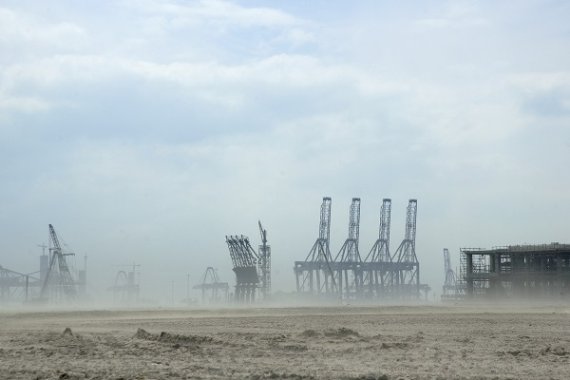Owing to globalization and the privatization of port authorities, in many countries the role of the government has declined when it comes to building harbours, and international companies are taking their place. Consider, say, the Dutch dredgers Boskalis or Van Oord, or the privatized Port of Rotterdam Authority that is investing in ports elsewhere in the world. In her PhD thesis, environmental sociologist Dorien Korbee concludes that these international companies often contribute positively to the sustainability of the port’s construction. The companies bring knowledge about sustainability that in many countries is not yet known. Dutch companies opt for sustainability to enable them to compete with contractors from, say, China. Korbee focused on the concept of Building with Nature, in which the ecology is taken as the starting point for building the port rather than adapting the environment to suit the design.
The greatest likelihood of a port being built sustainably, says Korbee, arises when the responsibilities within the project are divided among as many parties as possible and various viewpoints are involved in both the planning and construction. Korbee calls this an ‘open arrangement’. The construction of Maasvlakte 2 in Rotterdam is one such example. ‘The government cooperated with a wide range of parties. Permits were obtained while the plans were being made, so plans and permits were flexibly geared to each other and there was scope for innovation by companies.’ Designing the process in this way also enables environmental organizations and local residents to have their say.
In a more hierarchical structure, says Korbee, the government is more directive and companies are involved only once construction starts. An example of a less open arrangement occurred in Melbourne, Australia. ‘The government regarded the expansion of the sea port as a technical design issue. Concerns about the environment and social consequences were considered secondary issues and not originally included.’ Eventually, protests by local residents and NGOs halted construction for a couple of years. The lesson: take all interests seriously right from the start. A recommendation for contractors is to investigate whether local residents and environmental organizations accept the design, which should also be technically feasible, before they take on a job. Korbee’s study was financed by the Ecoshape Foundation, an innovation programme in which 21 PhD candidates are researching the concept of Building with Nature. Ecoshape is funded in part by Boskalis and Van Oor.

